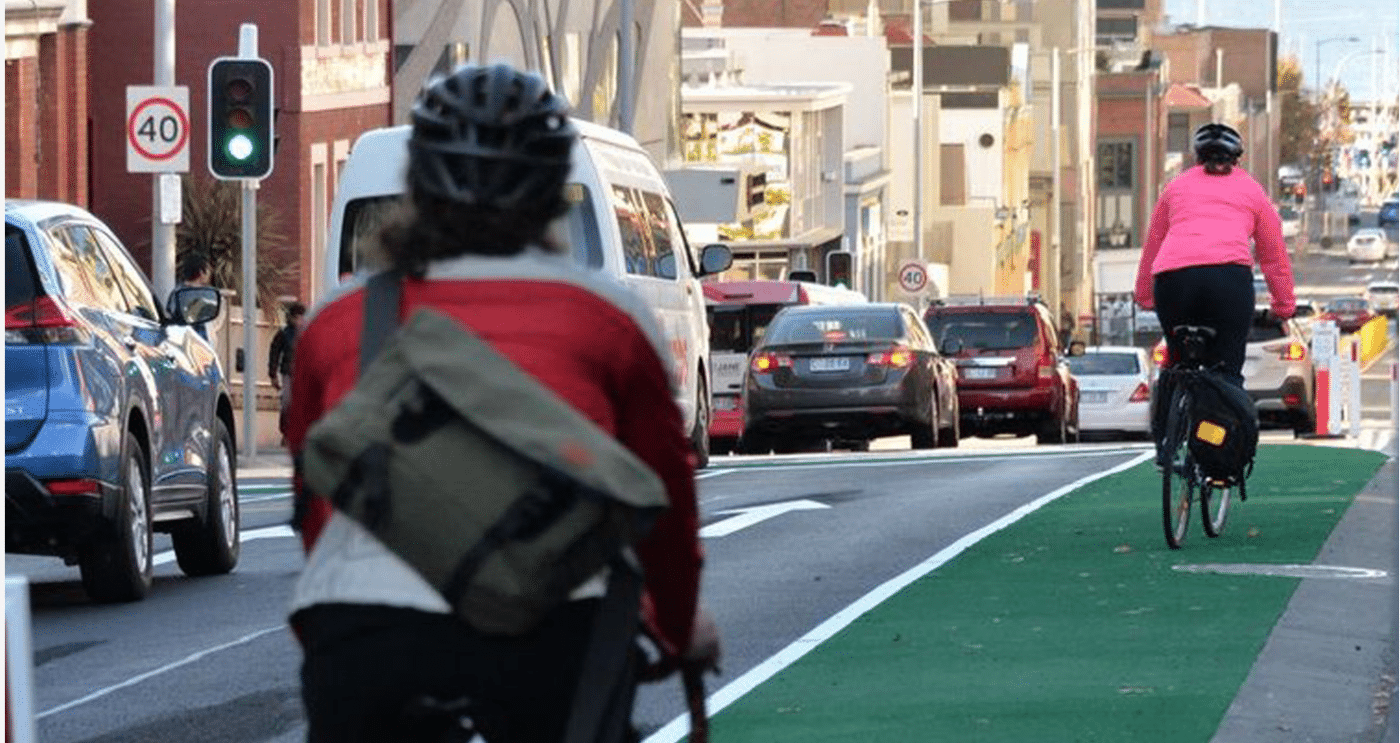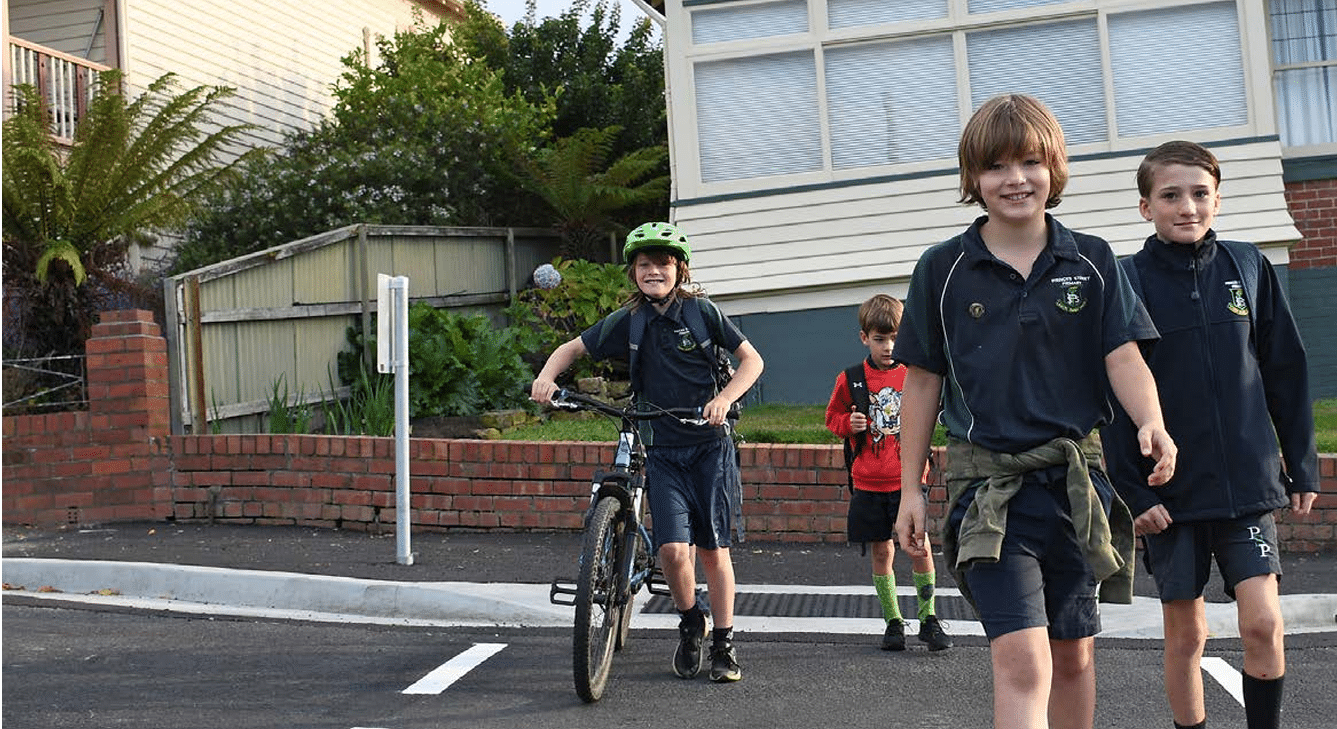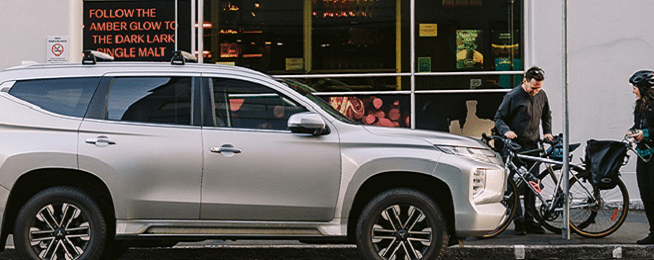The City of Hobart has released a new transport strategy for community comment.
The goal of the Hobart Transport Strategy 2024 is to provide more transport choice over the next 10 years by promoting riding and walking to reduce transport emissions and traffic congestion. It follows a strategy released in 2018 but not adopted in full by the then Hobart City Council.
Importantly, a new parking and kerbside management plan is being presented for comment alongside the strategy. It recommends reallocating road space to gain a fairer split of infrastructure to support more walking, riding and public transport.
The transport strategy aims to ensure "short and medium trips can easily be made by bicycle, e‑bikes and e‑scooters" and commits to building "a connected network of safe and comfortable paths, separated from traffic, and streets in Hobart to enable people of all ages and abilities to choose to ride for more trips".
The strategy also promises to “embed a bike riding and micromobility culture within our city through behaviour change and education programs”.
The strategy does not include measurable goals as the city has signed up to the goals within the multi-government Hobart City Deal and Tasmanian Government's Keeping Hobart Moving Plan, which notably aims to double the number of people walking and riding to work from 8% to 16%.

Actions outlined in the strategy that could affect bike riding include:
- Establishment of a travel behaviour change program with dedicated resourcing.
- Develop a speed limit reduction policy.
- Planting trees on active transport routes.
- Continue to develop Local Area Mobility Plans to plan for and support the provision of improved active travel (walking and bike riding) facilities.
- Support children’s active travel to school through development of School Active Travel Plans.
- Progressively connect and protect the bicycle network as identified in the Greater Hobart Cycling Plan for All Ages and Abilities.
- Implement tactical/adjustable solutions to improve bike connectivity, visibility and safety. This could include protected intersections, lanes, and pop‑up mobility hubs.
- Improve lighting design to enhance safety on bicycle paths.
- Support the growth of e‑bikes to get more people riding.
- Work with providers to expand micromobility offerings such as e‑bikes and seated scooters.
- Ensure that planned disruptions and works such as events or construction activities do not unduly impact cycleways in ways that are inconsistent with the directions of this strategy.
- Work with the Tasmanian government to develop a Hobart bike plan.
- Work with the Tasmanian government to continue to develop high-quality bicycle lanes on key state-managed roads.
- Work with the Tasmanian government to trial a protected intersection and, if successful, implement where appropriate.
- Work with the state government on active transport connectivity to public transport stops.
- Investigate opportunities where localised freight consolidation may deliver benefits (last‑kilometre delivery) – cargo hubs and active transport.

The strategy was approved for consultation by the council at its April meeting, with several councillors making negative and positive comments on the strategy. You can watch the debate on You Tube at https://www.youtube.com/watch?v=VUio5Z_buT4 from 58 minutes and 50 seconds.
The meeting also decided that people’s views on large/oversized private vehicles in the city should be included as part of the consultation.
You can provide your feedback on the transport strategy and parking and kerbside management plan via the online survey or email to coh@hobartcity.com.au before 31 May. The final strategy and parking plan will use the public feedback to prioritise the listed actions.
If you need more information before submitting your feedback there will information stalls at:
- Farm Gate Market, Bathurst Street: Sunday 12 May, 8.30am – 1pm
- Hobart Pool, Queens Domain: Thursday 16 May, 3.30–6.30pm
- Mathers House, 108–110 Bathurst Street: Tuesday 21 May, 11.30am – 1.30pm


